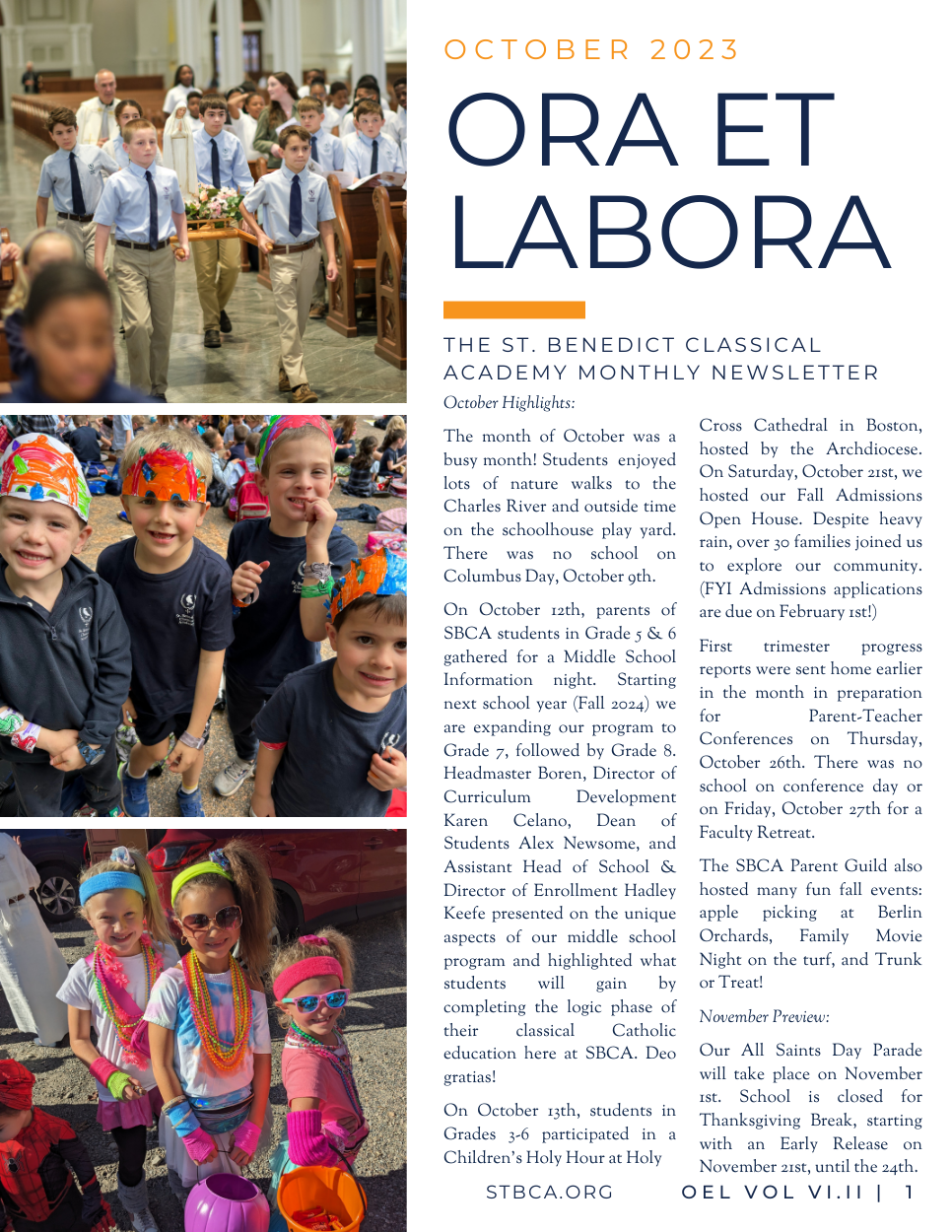One of the most powerful modes of learning happens when a child discovers the beauty of a work of art. At Saint Benedict Classical Academy, one of the ways we aim to foster discovery happens through socratic seminars. And, while didactic (lecturing or “telling”) and small group coaching are also important ways of teaching, socratic seminars create powerful opportunities for students to discover texts through academic dialogue with their peers. This method of discovery, which can be adapted for every grade level, looks different from the traditional classroom setting of desks in a row with a teacher instructing from the front of the classroom. In a socratic seminar, students are seated in a circle while the teacher guides the discussion from a desk also within the circle. The teacher uses open-ended questions to help students discover meaning in a rich text (a poem, artwork, math problem, historical document, or other text that contains multiple interpretations). My favorite approach uses the Paideia method developed by American philosopher, Mortimer Adler, which encourages multiple readings of the text and teaches students to dialogue while building off of others’ ideas, listening actively, using first names, maintaining eye contact, referring to specific aspects of the text, and speaking out of uncertainty. Paideia is a Greek word for “bringing up a child” and this method uses a maieutic environment to “bring forth” or “birth” ideas.
Recently, my fifth grade class participated in a seminar discussion on Rudyard Kipling’s poem “If-”. They explored the big ideas of virtue, vice, knowledge, and perseverance. First, students were asked to write how they define adulthood. Prewriting is a task that helps students begin to clarify their thoughts on the big ideas that will be discussed. Interestingly, some of their definitions of adulthood included being a certain age, being responsible, being able to hold a job, knowing and loving their family, having the freedom to do whatever they want, and being able to provide for another person. Next, they read through the poem two times and defined any unfamiliar words. Finally, they agreed on a class goal of using each other’s first names and then took time to write down individual goals, aiming to grow in a specific area of speaking or listening.
The discussion opened with a round-robin response, and then students were invited to share ideas. As the discussion progressed, students referred to specific line numbers of the text to support their ideas, often building off of one another’s ideas and sometimes respectfully disagreeing with their classmates. They scribbled notes to record observations and ideas for future contributions, learning to balance their desire to share with the necessity of listening. At times, the volume would escalate when several people would attempt to speak simultaneously, but it was heartening to watch them defer to each other, and to elevate the tone of the discussion by using each other’s first names. Incredibly, the seminar discussion lasted for almost ninety minutes, and was brought to a close only because it was time for lunch! It still amazes me that when given the proper tools and setting, a classroom of ten and eleven year olds discussed poetry for over an hour, with only minimal questioning from the teacher – a true dialogue.
AUTHOR: Jill Kerr, Grade 5 Teacher








